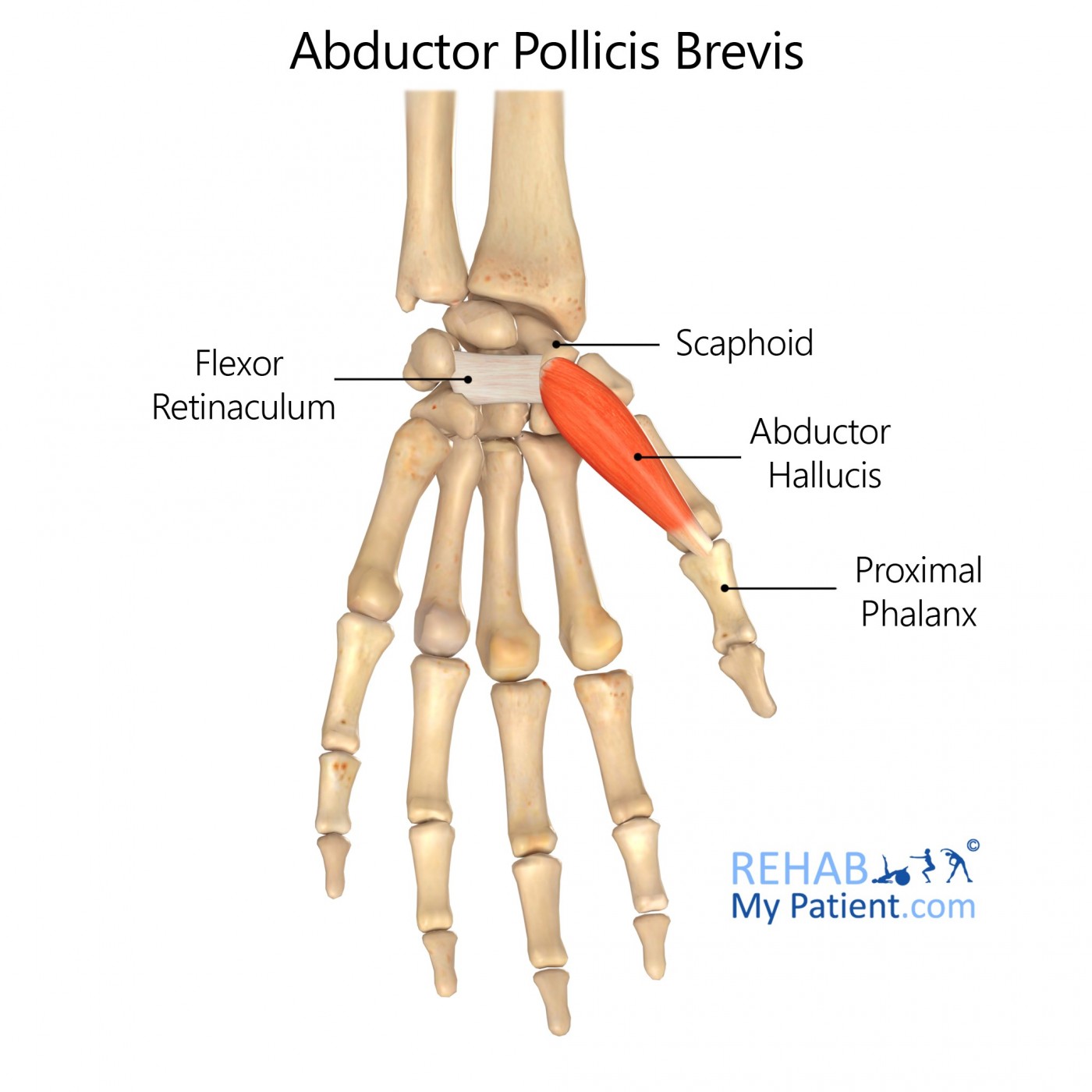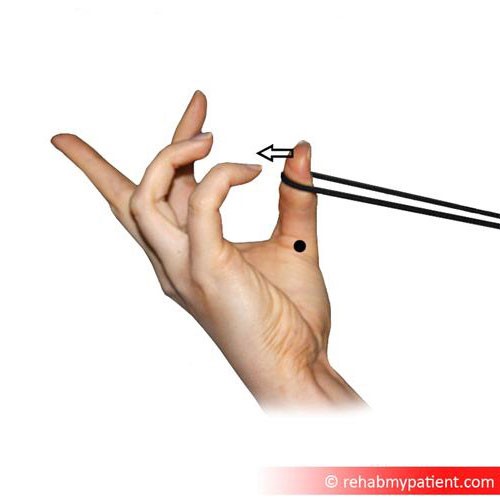
General information
The abductor pollicis brevis is a small muscle in the hand which serves to aid in abduction of the thumb, as well as providing a lesser degree of assistance in opposing and extending the thumb.
Literal meaning
Short abductor of the thumb.
Interesting information
Because of its role in opposition of the thumb, the abductor pollicis brevis is a particularly important component of muscular anatomy.
The structure of the muscles and joints which surround the thumb is quite different to that of the other fingers, providing increased flexibility and allowing for a much greater degree of accuracy and precision of movement.
Injury to the abductor pollicis brevis can be caused by repetitive motion or a direct trauma. The most common causes would be overuse, perhaps caused by repetitive actions such as typing, heavy lifting, and sports; or a direct impact, such as a fall to the ground or punching something.
Origin
The abductor pollicis brevis originates at the flexor retinaculum of the hand, the tubercle of the scaphoid bone, and less commonly, the tubercle of the trapezium.
Insertion
The muscle inserts via small tendon into the lateral side of the base of the first phalanx of the thumb, as well as the metacarpophalangeal joint.
Function
The abductor pollicis brevis acts to abduct the thumb by way of the metacarpophalangeal joint and the carpometacarpal joint, in addition to providing some assistance in the opposition and extension of the thumb.
Nerve supply
Recurrent branch of the median nerve.
Blood supply
Superficial palmar arch.
Picture

Relevant research
A 1995 study set out to examine the functional relationships between the abductor pollicis longus and abductor pollicis brevis muscles.
The study demonstrated that: “Cooperation between these muscles is necessary to stabilise the trapezium to the carpus in movements of the thumb. APB is activated in movements of the hand to maintain the tension in the deep APL. The deep APL is activated in movements of the thumb to prevent undesired movements of the hand and the forearm. The APB and superficial APL are prime movers of the thumb.”
Buschbacher RM, Median nerve motor conduction to the abductor pollicis brevis, Am J Phys Med Rehabil. 1999 Nov-Dec;78(6 Suppl):S1-8.
Abductor pollicis brevis exercise
This exercise is designed to train the natural range of motion of the abductor pollicis brevis by forcing it to abduct against resistance, in this case a small resistance band or elastic band.
Begin by finding an elastic band that is an appropriate size to provide adequate amount of resistance, and hold the elastic band between your two thumbs.
Once the elastic band is in place, keep your hands as still as possible while abducting your thumb out and away from the rest of your hand.
Keep the movement smooth and controlled and do not apply so much resistance that the movement becomes strained or jerky. The amount of resistance can be adjusted by holding the elastic band at different points along its length or by pulling it further back with your supporting hand.
Perform 10-20 repetitions on each hand and repeat for 3-4 sets.

Reference
Ayres (1965), Chronaxie Changes in the Extensor Pollicis Brevis, Abductor Pollicis Brevis, and Abductor Digiti Quinti in Rheumatoid Arthritics, University of Iowa
Sign Up
Sign up for your free trial now!
Get started with Rehab My Patient today and revolutionize your exercise prescription process for effective rehabilitation.
Start Your 14-Day Free Trial